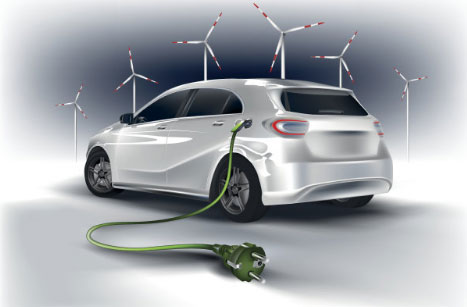China's new energy vehicle production remains strong. In October 2020, China’s new energy vehicle production increased by 21.32% month-on-month to 165,000 units, an increase of 94.12% year-on-year. We expect that in 2020/2021/2022, it will exceed 140/200/274 million units. Maintaining a growth rate of about 40%, it is predicted that China's new energy vehicle production will reach 5.74 million units in 2025. Based on the consumption of 5 kilograms of neodymium iron boron per new energy vehicle, China's new energy vehicles will drive 6,250/ in 2020/2021/2022 10,000/13,700 tons of NdFeB permanent magnet material consumption. EPS penetration in the traditional automobile market continues to increase. EPS is one of the main applications of rare earths in the world, and the increase in its permeability will have a significant effect on the consumption of NdFeB. In October 2020, China's auto production increased by 0.81% month-on-month to 2.481 million vehicles, an increase of 8.86% year-on-year; sales volume increased by 0.31% month-on-month to 2.573 million vehicles, an increase of 12.65% year-on-year. According to forecast data from the Ministry of Industry and Information Technology, China's car sales are expected to reach 35 million in 2025, corresponding to a CAGR of 5.2% for car sales in 2019-2025. We assume that the EPS penetration rate in 2017 is 35%, and the future EPS penetration rate will increase by 3% every year. According to the data released by the Rare Earth Industry Association, each set of EPS needs to use 0.25 kg of NdFeB. We estimate that the automobile production in 2020-2022 will be 2,712/2,854/3.003 million vehicles, and the demand for NdFeB of EPS systems will be 2,983/3,353/ 3,754 tons. The rapid development of wind power has stimulated the consumption of NdFeB. According to data from the Global Wind Energy Council (GWEC), the world's newly installed wind power capacity was 60.4GW in 2019, an increase of 19% from 2018, reaching a total of 651.5GW, with a compound annual growth rate of 13% in the past five years, of which China Wind Power The total amount is about 209GW, accounting for 35% of the total global wind power generation, and it is the world's largest single market. The Global Wind Energy Council predicts that by 2023, the global installed capacity of wind power will increase by at least 55GW per year. The growth in demand for wind power generation equipment is expected to continue to drive the consumption of NdFeB. The penetration rate of inverter air conditioners continues to increase to drive the consumption of NdFeB. According to industry online data, China's sales of inverter air conditioners in 2019 were 68.038 million units. Based on the amount of NdFeB required for each inverter air conditioner announced by the Rare Earth Industry Association as 0.1 kg, the total consumption of NdFeB for the production of inverter air conditioners in 2019 was about 6,800 tons. The CAGR of the output of inverter air conditioners from 2013 to 2019 was 11.4%, and its proportion in the total output of air conditioners increased from 31.9% in 2013 to 45.2% in 2019. Consumption upgrades and product frequency conversion energy saving and intelligentization will become the future mainstream trend of the household appliance industry. It is expected that the CAGR of China's inverter air conditioner output will remain at about 13% in 2019-2022, and China's inverter air conditioner output will be 7,688 in 2020/2021/2022 /8,687/98.17 million units, the demand for NdFeB brought by China's inverter air conditioner production in 2020/2021/2022 will reach 7,688/8,687/9,817 tons, respectively.





